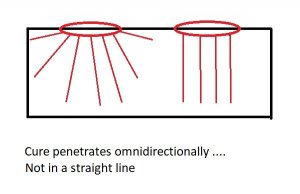I'm going to have to respectfully disagree with you Bear. No doubt, using the EXACT cure calculator is of course the most accurate way for a dry brine. But you will have a hard time convincing me a "hand mix" tenderquick substitute will be any less effective- god forbid "Dangerous" than Morton makes it.
Remember The maximum 200 ppm input to the total raw formulation weight (before cooking, smoking, etc.) except bacon. For bacon, the maximum level of use for nitrite is 120 ppm input to the total raw formulation weight. Also, since the skin retains practically no cure agent, the maximum nitrite limits are supposed to be reduced by 10%. (By the way.. don't forget to change the calculator from the default of 156.)Anyway, These are MAXIMUMS!!! Does a dry cure HAVE to be calculated at the maximum ppm to be effective?- NO.
Even IF a "hand mix" substitute is not mixed properly and is of by say.. 10% or even 20% (which it wont), it is still going to do the job and not be "dangerous" There is no such thing as Partially-cured. It either is- or it isn't cured. As I said it will still be more accurate than commercially pumped bacon.
Like most things on here, everyone has an opinion.
As for this subject I have some opinions, and some things I've read years ago:
Such as I read that Mortons processes their Tender Quick to eliminate the problem of Stratification.
So I didn't say you or others shouldn't make their own make believe TQ, I'm just saying I would not do it myself!!!
Many years ago, the Morton Salt people developed Tender Quick, so that the home cook could safely cure meat. The ingredients in Tender Quick are bonded. Basically, bonding means that the ingredients are mixed with water to achieve a solution and then dried. This guarantees that the ingredients are distributed evenly in the proper ratio, even in the smallest amounts.
This is why I use Tender Quick for all my curing needs.
I figure if Bonding wasn't needed to avoid Stratification, Morton wouldn't have wasted their Time & money to do it.
Another of my "Opinions" is that I will not use Cure #1 to Dry Cure, because I can see no way to distribute 1tsp of Cure #1 evenly over 5 pounds of Pork Belly, and mixing it with Salt & Sugar doesn't help, because you could end up with mostly salt on one End of a Belly & mostly Cure on the other. So If I was going to use Cure #1 for curing, I would use the Brine curing like Pops Does, because once the Cure is dissolved in Water, it is evenly distributed throughout, just like the Real Tender Quick is during a Dry Cure.
However I'll repeat these are just MY OPINIONS, and others can do what they want to do.
Bear






